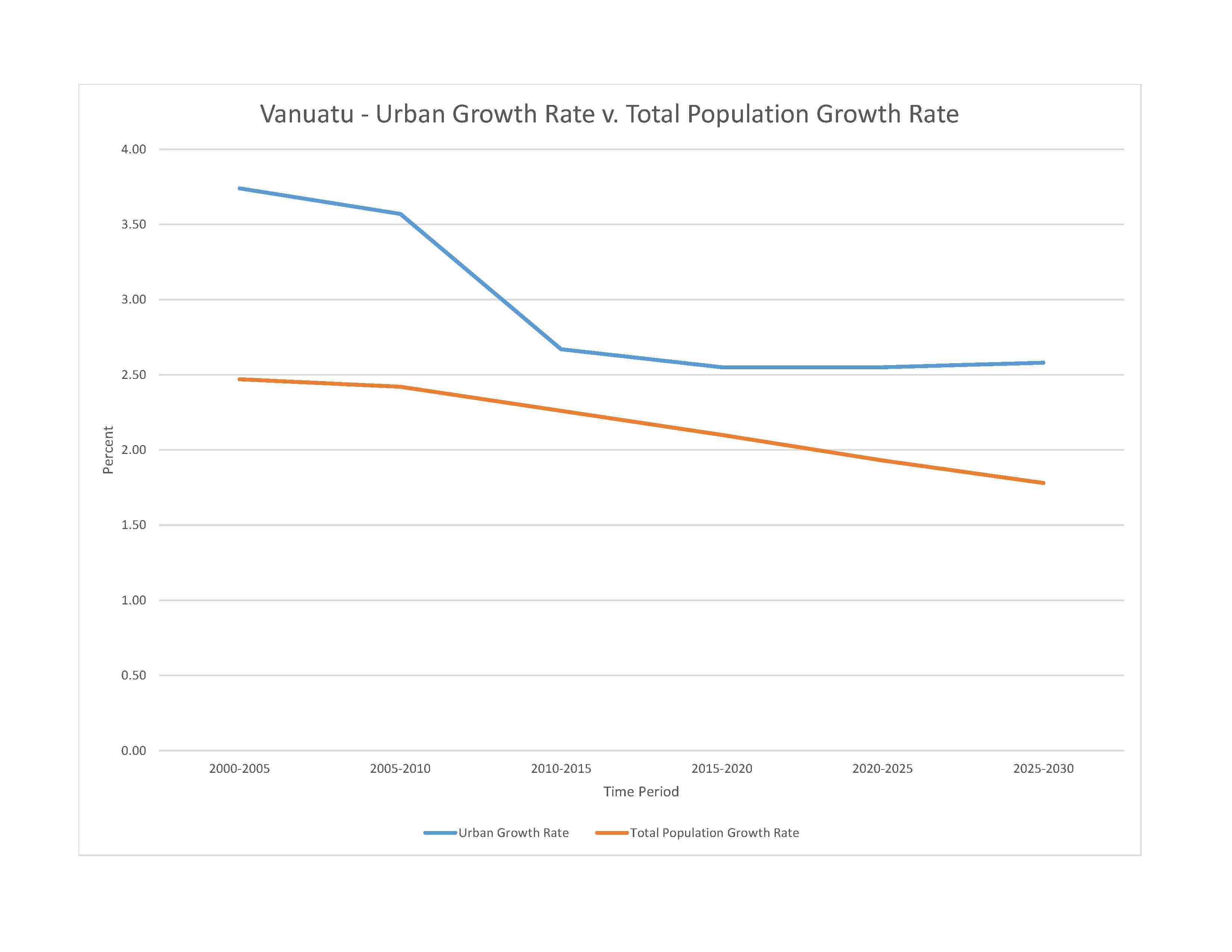
313,046 (2023 est.)
noun: Ni-Vanuatu (singular and plural)
adjective: Ni-Vanuatu
Ni-Vanuatu 99%, other 1% (European, Asian, other Melanesian, Polynesian, Micronesian, other) (2020 est.)
Indigenous languages (more than 100) 82.6%, Bislama (official; creole) 14.5%, English (official) 2.1%, French (official) 0.8% (2020 est.)
note: data represent first language spoken for population aged 3 years and above
Protestant 39.9% (Presbyterian 27.2%, Seventh Day Adventist 14.8%, Anglican 12%, Churches of Christ 5%, Assemblies of God 4.9%, Neil Thomas Ministry/Inner Life Ministry 3.2%), Roman Catholic 12.1%, Apostolic 2.3%, Church of Jesus Christ 1.8%, customary beliefs (including Jon Frum cargo cult) 3.1%, other 12%, none 1.4%, unspecified 0.1% (2020 est.)
0-14 years: 31.73% (male 50,721/female 48,607)
15-64 years: 63.41% (male 97,376/female 101,135)
65 years and over: 4.86% (2023 est.) (male 7,486/female 7,721)
total dependency ratio: 76.5
youth dependency ratio: 69.9
elderly dependency ratio: 12.3
potential support ratio: 15.2 (2021 est.)
total: 24.2 years (2023 est.)
male: 23.7 years
female: 24.6 years
1.59% (2023 est.)
21.2 births/1,000 population (2023 est.)
4 deaths/1,000 population (2023 est.)
-1.3 migrant(s)/1,000 population (2023 est.)
three-quarters of the population lives in rural areas; the urban populace lives primarily in two cities, Port-Vila and Lugenville; three largest islands - Espiritu Santo, Malakula, and Efate - accomodate over half of the populace
urban population: 26% of total population (2023)
rate of urbanization: 2.55% annual rate of change (2020-25 est.)

53,000 PORT-VILA (capital) (2018)
at birth: 1.05 male(s)/female
0-14 years: 1.04 male(s)/female
15-64 years: 0.96 male(s)/female
65 years and over: 0.97 male(s)/female
total population: 0.99 male(s)/female (2023 est.)
94 deaths/100,000 live births (2020 est.)
total: 14 deaths/1,000 live births (2023 est.)
male: 15.4 deaths/1,000 live births
female: 12.6 deaths/1,000 live births
total population: 75.4 years (2023 est.)
male: 73.7 years
female: 77.2 years
2.59 children born/woman (2023 est.)
1.26 (2023 est.)
49% (2013)
improved: urban: 100% of population
rural: 89.7% of population
total: 92.3% of population
unimproved: urban: 0% of population
rural: 10.3% of population
total: 7.7% of population (2020 est.)
4% of GDP (2020)
0.17 physicians/1,000 population (2016)
improved: urban: 91.1% of population
rural: 60.4% of population
total: 68.2% of population
unimproved: urban: 8.9% of population
rural: 39.6% of population
total: 31.8% of population (2020 est.)
25.2% (2016)
total: 1.6 liters of pure alcohol (2019 est.)
beer: 0.34 liters of pure alcohol (2019 est.)
wine: 0.39 liters of pure alcohol (2019 est.)
spirits: 0.87 liters of pure alcohol (2019 est.)
other alcohols: 0 liters of pure alcohol (2019 est.)
total: 17.8% (2020 est.)
male: 33% (2020 est.)
female: 2.6% (2020 est.)
11.7% (2013)
69.2% (2023 est.)
2.2% of GDP (2020 est.)
definition: age 15 and over can read and write
total population: 89.1%
male: 89.8%
female: 88.4% (2021)
NOTE: The information regarding Vanuatu on this page is re-published from the 2024 World Fact Book of the United States Central Intelligence Agency and other sources. No claims are made regarding the accuracy of Vanuatu 2024 information contained here. All suggestions for corrections of any errors about Vanuatu 2024 should be addressed to the CIA or the source cited on each page.
This page was last modified 04 May 24, Copyright © 2024 ITA all rights reserved.